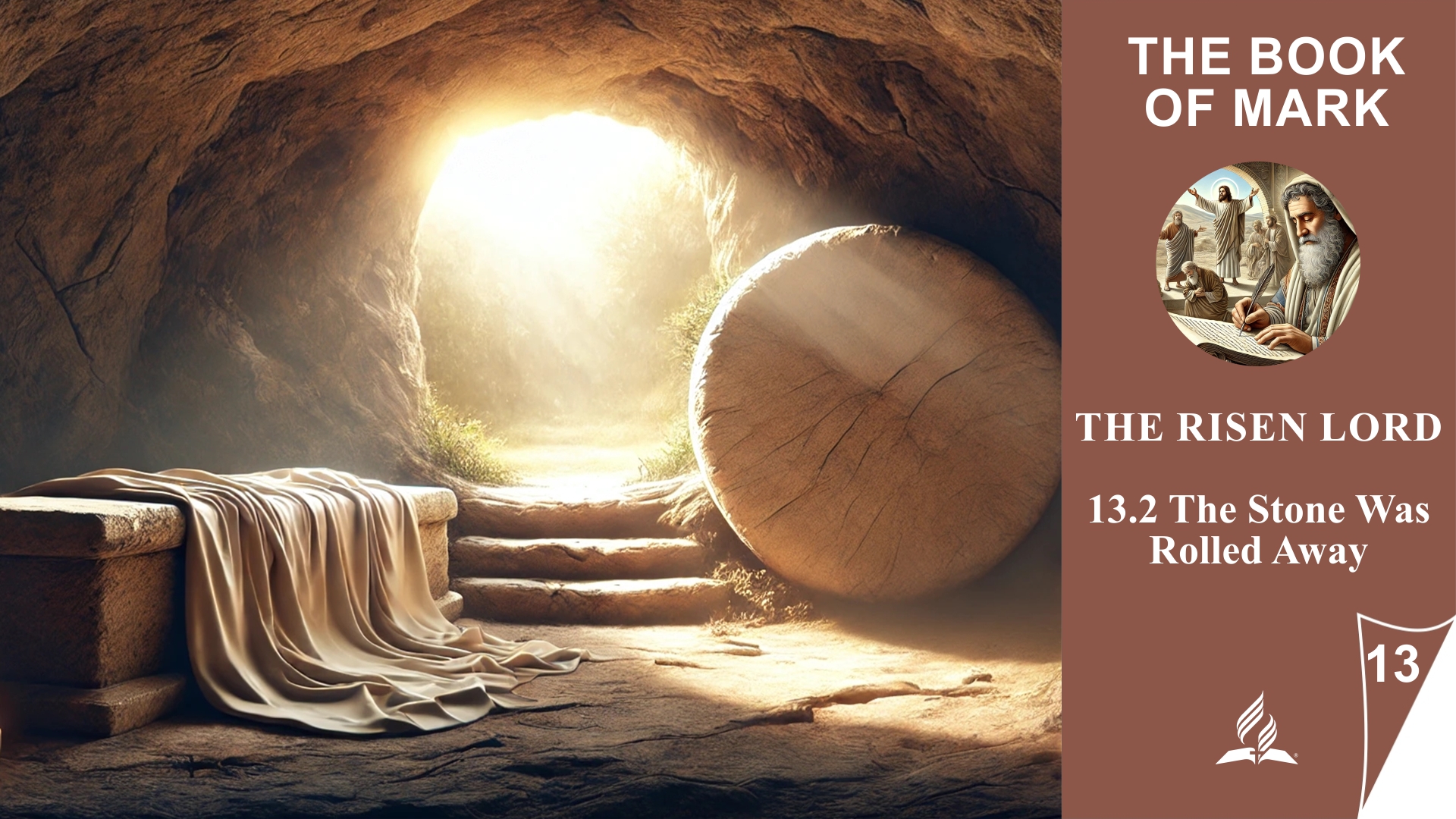


13.2 The Stone Was Rolled Away
Testimonies and Evidence of the Resurrection
Read Mark 16:1–8 and 1 Corinthians 15:1–8. What do these passages have in common?
In Mark 16:1–8 and 1 Corinthians 15:1–8, we find central elements of the Christian message: death, burial, resurrection, and the appearance of the risen Christ. Both passages testify to the heart of the Christian faith—that Jesus did not remain in the tomb but was raised from the dead.
The Gospels and Paul’s letters confirm these four essential points: Jesus died, was buried, rose again, and was seen by many witnesses. The empty tomb and the eyewitness accounts, as described in 1 Corinthians 15, strengthen the historical and spiritual foundation of the resurrection.
The stone that was rolled away symbolizes more than just a physical act—it stands for Jesus’ triumph over death and sin. The empty tomb is the key to the Christian hope that we too have new life through faith in Him.
For many people, belief in the resurrection may be difficult to understand. However, as Paul emphasizes in 1 Corinthians 15, the resurrection of Christ is the foundation of the Gospel. If God could create the universe, it is only reasonable to believe that He also has the power to raise Jesus from the dead.
Additionally, there are several pieces of evidence that support the resurrection: the empty tomb, the inability of Jesus’ opponents to produce His body, the numerous eyewitness accounts, and the radical transformation in the lives of the disciples and the Apostle Paul. These individuals were willing to die for their belief in the risen Christ—a strong testimony to their conviction.
Thus, the resurrection is not only a historical fact but also the core of our hope. The stone was rolled away, and with it, the way was cleared for our new life in Christ, full of hope and promise.
What would you answer if someone asked you: What evidence do you have for the resurrection of Christ?
If someone asked me for evidence of the resurrection of Christ, I would point to a combination of historical, logical, and personal aspects:
-
The Empty Tomb: Historically, the empty tomb is one of the best-documented aspects of the resurrection. Even critical historians, including atheists, agree that Jesus’ tomb was empty. If His body had still been there, the religious and Roman leaders would have presented it to immediately refute the rumors of the resurrection. But that did not happen.
-
Eyewitness Accounts: The Gospels and Paul report that many people saw the risen Jesus. In 1 Corinthians 15, Paul lists eyewitnesses, including more than 500 people who saw Jesus alive. These reports come from different individuals and groups, making the likelihood of a collective hallucination effect extremely low.
-
The Radical Transformation of the Disciples: After Jesus’ crucifixion, His disciples were fearful and hid. But after the resurrection, they experienced an astonishing transformation—from frightened individuals to bold proclaimers of the Gospel, willing to die for their faith. This transformation makes it unlikely that they believed in a lie or fabricated the events.
-
The Conversion of Paul: Paul was a determined persecutor of the early Christians. However, after his encounter with the risen Christ, he completely changed his life and became one of the greatest advocates of the Gospel. This dramatic conversion suggests that Paul must have had an overwhelming experience.
-
The Rise of Christianity: Within a few decades after Jesus’ crucifixion, Christianity spread throughout the Roman Empire despite intense persecution. This rapid expansion was based on the testimony of those who claimed that Jesus had risen from the dead and were willing to die for this conviction.
-
Logical Conclusion: If one believes in God as the Creator, the resurrection as a divine act is plausible. The God who created life can also restore it. Thus, the resurrection becomes a reasonable consequence of God’s omnipotence.
In summary: Historical facts, eyewitness accounts, the radical transformation of the disciples and Paul, and the rise of Christianity are strong indications that the resurrection is not a myth but a real historical and spiritual event.
The resurrection of Christ holds not only historical and theological significance but also a deep connection to our daily lives and faith. It offers us a perspective of faith that can shape our daily thinking, actions, and experiences:
-
Hope in Daily Life: The resurrection is the central symbol of hope in the Christian faith. The stone that was rolled away signifies that nothing—even death—can separate us from God’s love. This hope helps us cope with challenges, crises, and fears because we know that God has the final word and that we have new life in Him.
-
New Life in Christ: Just as the stone was rolled away from the tomb, our old life is left behind through the resurrection. Paul describes this in 1 Corinthians 15 and elsewhere—through the resurrection, we live a new life in Christ. In our daily lives, this means that we can experience changes through God’s power, whether in dealing with our weaknesses, relationships, or decisions.
-
Faith in God’s Power: The resurrection shows that God has the power to make the impossible possible. This strengthens our faith in daily life when we face situations that seem impossible. The fact that Jesus rose from the dead gives us the faith that God can work in our life circumstances as well.
-
Forgiveness and New Beginnings: The resurrection is proof that Jesus has conquered death and sin. This means that we can live in God’s forgiveness and grace. In our daily lives, this truth gives us the freedom to live in forgiveness—both toward ourselves and others.
-
Courage to Be a Witness: The disciples experienced a radical change after the resurrection—from fearful individuals to bold proclaimers. Likewise, through faith in the risen Christ, we are empowered to live out our faith courageously and share it with others. The resurrection assures us that we need not fear, for Jesus has overcome death.
-
Living Hope: As stated in 1 Peter 1:3, God has given us a “living hope” through the resurrection of Jesus Christ. This hope is not just an idea but a living reality that accompanies and sustains us in every life situation. It influences how we view our future—not with fear but with confidence.
In summary: The resurrection of Christ not only means that the stone was rolled away from the tomb but also that obstacles and blockages can be overcome in our lives. It gives us hope, new strength, and the assurance that through Christ, we can walk each day in a new life—with courage, faith, and joy.
The resurrection of Jesus reminds us that there is always hope, even when everything seems lost.
(Visited 23 times, 1 visits today)






















